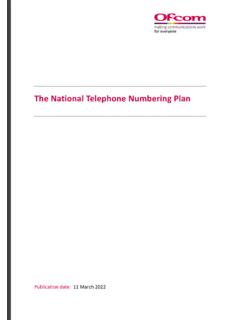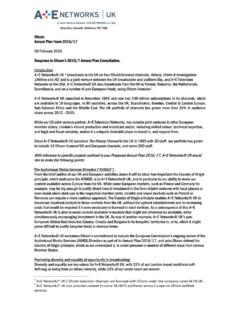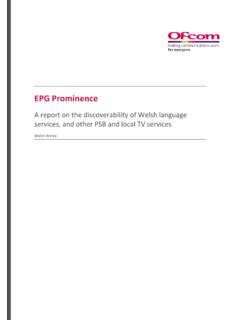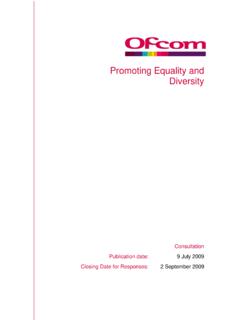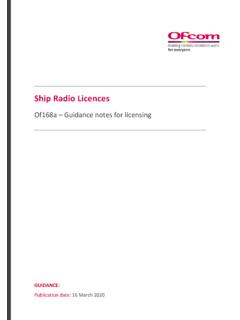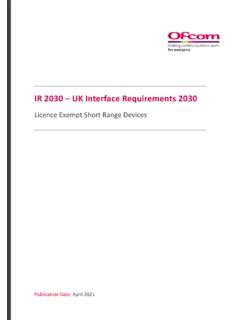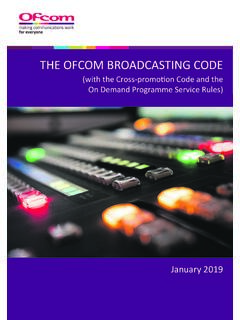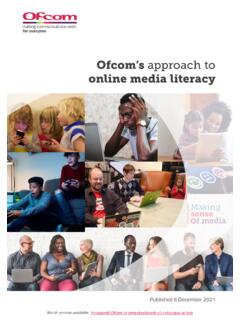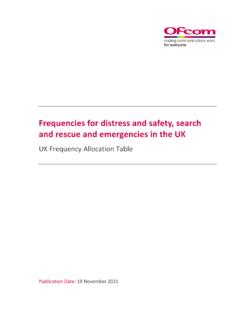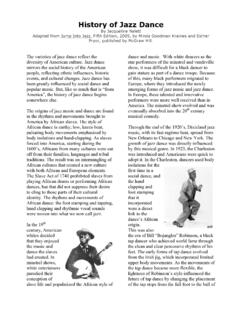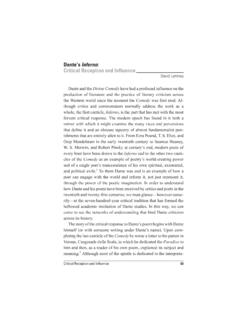Transcription of Attitudes to potentially offensive language and gestures ...
1 15-072401-01 | Final | Public | This work was carried out in accordance with the requirements of the international quality standard for Market Research, ISO 20252:2012, and with the Ipsos MORI Term s and Conditions whic h can be found at http: //www. i 2016 September 2016 Attitudes to potentially offensive language and gestures on TV and radio Quick Reference Guide Warning: this guide contains a wide range of words which may cause offence. Ipsos MORI | Attitudes to potentially offensive language and gestures on TV and radio 15-072401-01 | Final | Public | This work was carried out in accordance with the requirements of the international quality standard for Market Research, ISO 20252:2012, and with the Ipsos MORI Term s and Conditions whic h can be found at http: //www. i 2016 Contents Acceptability of words and gestures .. 3 Introduction ..3 The importance of context.
2 3 How the Quick Reference Guide is Non-discriminatory 5 General swear words and body parts ..5 Sexual references ..7 O ffen si ve ges tu Discriminatory language .. 9 O l der peo pl e ..9 Sexual orientation and gender identity ..9 Mental health and physical ability .. 11 Race and ethnicity .. 12 15-072401-01 | Version 1 | Public | Internal Use Only | This work was carried out in ac cordance with the requirements of the international quality standard for Market Research, ISO 20252:2012, and with the Ipsos MORI Term s and Conditions whic h can be found at 2016 Ipsos MORI | Attitudes to potentially offensive language and gestures on TV and radio 3 15-072401-01 | Final | Public | This work was carried out in accordance with the requirements of the international quality standard for Market Research, ISO 20252:2012, and with the Ipsos MORI Term s and Conditions whic h can be found at http: //www.
3 I 2016 Acceptability of words and gestures W arning: this Guide contains a wide r ange of words which may cause offence. Introduction This doc um e nt should be read in conjunction with the full Ipsos MORI / Ofcom research report: Attitudes to potentially offensive language and gestures on TV and radio, published in September 2016. It serves as a quick reference guide summarising the views of participants in that research on the acceptability of individual words and gestures on TV and radio which are potentially offensive . This Quick Reference Guide draws on quantitative and qualitative data collected throughout that extensive programme of research. The research used a mixed methodology involving 248 participants in total from around the UK. This comprised a series of face-to-face focus groups and in-depth interviews, and a separate quantitative online survey followed by an online community discussion with the same participants.
4 Please see the full report for further details of the methodology for this study. Ofcom hopes that this document will provide all stakeholders, but broadcasters in particular, with useful information about how acceptable or unacceptable in general terms viewers and listeners regard specific potentially offensive words and gestures . The importance of context It is important to emphasise that participants in the research found it hard to make overall judgments about individual words or gestures without taking i nt o ac c ount the specific context. In some cases, they gave their views on the acceptability of words without being provided with detail about how a specific word mi ght have been use d. The importance of context in participants approach to assessing these words means that care needs to be taken when reviewing the information set out in this Quick Reference Guide. The words and gestures are grouped, based on participants responses, to reflect a general hierarchy of acceptability.
5 These groupings reflect a broad range of responses, and t hefore m uc h of the nuance of participants reasoning about acceptability is de-emphasised. Non-discriminatory words are grouped as: milder words (of little concern), medium words ( potentially unacceptable pre-watershed but acceptable post-watershed), strong words (generally unacceptable pre-watershed but mostly acceptable post-watershed), and finally, the strongest words (highly unacceptable pre-watershed, but generally acceptable post-watershed). Participants responses to discriminatory words suggested that they had a different approach to the acceptability of this type of potentially offensive language on TV and radio. In general, discriminatory language was seen as more problematic than the more generally offensive language . A number of participants considered that the stronger forms of discriminatory language were potentially unacceptable both before and after the watershed (although context was an important factor).
6 Participants expected broadcasters to exercise particular care regarding the broadcast of the strongest discriminatory language . Ipsos MORI | Attitudes to potentially offensive language and gestures on TV and radio 4 15-072401-01 | Final | Public | This work was carried out in accordance with the requirements of the international quality standard for Market Research, ISO 20252:2012, and with the Ipsos MORI Term s and Conditions whic h can be found at http: //www. i 2016 How the Quick Reference Guide is organised This Quick Reference Guide reflects the fact that not all words were familiar to the research participants, and this limited the detailed feedback that could be collected on little-known terms. The least familiar words (those that were recognised by less than 40% of participants in an online survey of all words) were on the whole slang terms relating to body parts or sex, as well as some ethnic or religious slurs.
7 These words are indicated in the lists below with an asterisk (*). Older participants recognised fewer words overall, tending not to recognise more recent slang terms. Participants had differing views in general about the various categories of potentially offensive words and gestures which they were asked to classify by level of acceptability. Their reactions suggested that the groups of potentially offensive language and gestures fell into two broad categories: (a) general swear words: words with clear links to body parts, sexual references, words used as general-purpose swear words, and offensive gestures ; and (b) specifically discriminatory l anguage, whether directed at older people, people of particular religions, people with mental health issues or a disability, LGBT people, or people from an ethnic minority. The individual words and gestures are set out in the lists below in alphabetical order in these various categories.
8 Ipsos MORI | Attitudes to potentially offensive language and gestures on TV and radio 5 15-072401-01 | Final | Public | This work was carried out in accordance with the requirements of the international quality standard for Market Research, ISO 20252:2012, and with the Ipsos MORI Term s and Conditions whic h can be found at http: //www. i 2016 Non-discriminatory language General swear words and body parts W ord A c ceptability Arse Mild language , generally of little concern. Arsehole Medium language , potentially unacceptable pre-watershed. More aggression or specific intent to hurt heightens impact. Balls Medium language , potentially unacceptable pre-watershed. Particularly vulgar or sexual use heightens the impact, especially for women. Bastard Strong language , generally unacceptable pre-watershed. More aggression or specific intent to hurt heightens impact. Less problematic when used to refer indirectly to someone who is cruel or nasty.
9 Beaver Strong language , generally unacceptable pre-watershed. Seen as vulgar and distasteful, especially by women. Beef curtains* Strong language , generally unacceptable pre-watershed. Low recognition. Seen as vulgar and distasteful, especially by women. Bellend Strong language , generally unacceptable pre-watershed. Seen by some as a childish word often said in jest. More aggression or specific intent to hurt heightens impact. Bint Medium language , potentially unacceptable pre-watershed. Seen as potentially derogatory by w omen, but men also find the word problematic. Bitch Medium language , potentially unacceptable pre-watershed. More aggression or specific intent to hurt heightens impact. Bloodclaat* Strong language , generally unacceptable pre-watershed. Low recognition. Among those familiar, seen as vulgar and crude. Strongly disliked by women when meaning discussed. Bloody Mild language , generally of little concern.
10 Frequently used in everyday language to express emotion, and not usually as a directed insult. Bollocks Medium language , potentially unacceptable pre-watershed. Not generally offensive but somewhat vulgar when used to refer to testicles. Less problematic when used to mean nonsense . Bugger Mild language , generally of little concern. Frequently used in everyday language to express emotion when making a mistake. Seen as much stronger when used in a clearly sexual context. Bullshit Medium language , potentially unacceptable pre-watershed. Older participants more likely to consider the word unacceptable. Clunge Strong language , generally unacceptable pre-watershed. Not always recognised. Seen as vulgar and distasteful, especially by women. Cock Strong language , generally unacceptable pre-watershed. Seen as vulgar and distasteful by many. Less problematic when used in a humorous context. Cow Mild language , generally of little concern.
